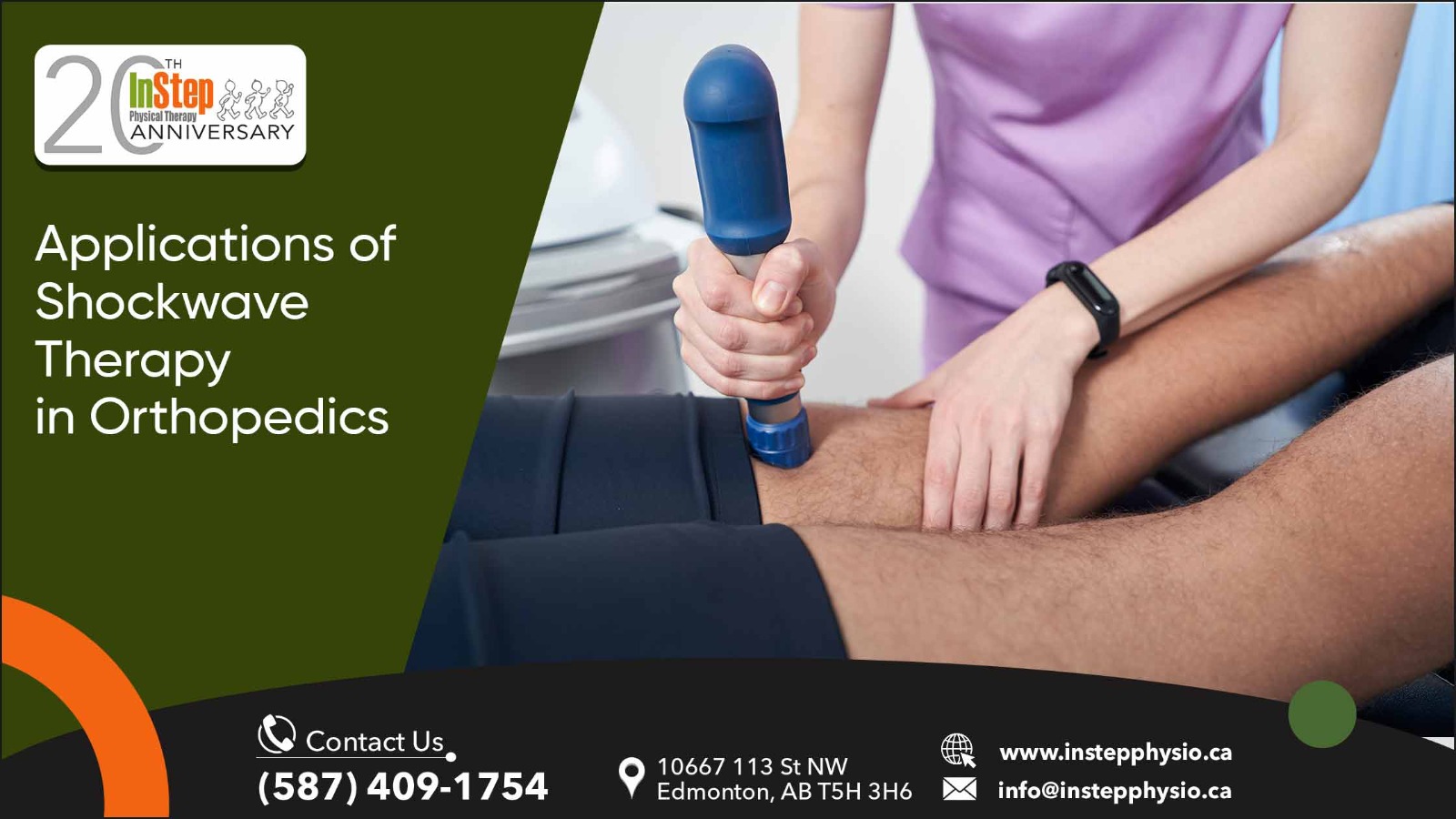Shockwave therapy is becoming an increasingly popular and trusted solution for a variety of orthopedic conditions. Orthopedic conditions are characterized by musculoskeletal disorders, and injuries have long been a challenge for healthcare professionals and patients alike. Traditional treatments, though effective, might sometimes entail prolonged recovery or invasive procedures. Enter shockwave therapy – a non-invasive treatment technique that is revolutionizing the field of orthopedics and utilized at centers like In Step Physical Therapy Edmonton.
The Science Behind Shockwaves
Shockwave therapy employs high-energy acoustic waves directed at areas experiencing pain or within musculoskeletal tissues affected by subacute, subchronic, or chronic conditions. Here’s a deeper dive into the science that powers this revolutionary treatment:
Nature of Shockwaves: A shockwave is characterized as an abrupt, drastic increase in pressure that’s exceptionally transient. It is not merely a more intense version of ultrasound but a distinct form of mechanical wave.
Energy Transmission: When shockwaves are generated using devices, they travel through the body and spread outwards from the point of origin. This energy promotes the regeneration and healing of the bones, tendons, and other soft tissues.
Stimulating Cellular Repair: As shockwaves interact with tissue, they induce a cascade of biological reactions. This causes the release of growth factors, increased collagen production, and enhanced blood circulation. The end effect is accelerated tissue repair and cell growth.
Breaking Down Calcifications: Calcified fibroblasts are common in chronic tendinopathies. The energy from shockwaves can break down these calcifications, restoring the tendon to a more normal physiological state.
Pain Reduction Mechanism: Shockwave therapy can influence pain perception by overstimulating the nerves that send pain signals, effectively reducing or blocking these signals. Additionally, it helps reduce pain by decreasing local tissue edema and inflammation.
Neovascularization: One remarkable effect of shockwave therapy is the stimulation of the formation of new blood vessels (neovascularization). This enhances the nutrient and oxygen supply to the treated area, facilitating healing and regeneration.
Enhancing Metabolism: Shockwaves can accelerate the elimination of nociceptive metabolites, reduce edema (swelling) and stimulate cellular metabolism, all of which contribute to pain alleviation.
Neural Inhibition: Shockwave therapy is thought to have a direct effect on nerve endings, diminishing the pain signals transmitted to the brain and reducing pain sensation overall.
Applications in Orthopedics
Plantar Fasciitis: A prevalent source of heel discomfort, plantar fasciitis results from the inflammation of the tissue linking the heel bone and the toes. Shockwave therapy provides relief by targeting the inflamed fascia, stimulating blood flow, and promoting healing.
Tendinopathies: Tendinitis and tendinosis, inflammations and degenerations of tendons respectively, can be effectively treated using shockwave therapy. Conditions like tennis elbow, jumper’s knee, and shoulder tendinopathies have shown positive responses.
Calcific Shoulder Tendinitis: Shockwave therapy has proven effective in fragmenting calcific deposits in the shoulder, which can then be absorbed by the body. This addresses both pain and limited range of motion.
Bone Healing: Shockwave therapy accelerates the healing of certain fractures by stimulating osteoblast activities, which are essential for bone regeneration.
Myofascial Pain Syndromes: Conditions like trigger points can be alleviated using shockwave therapy by targeting hyperirritable spots in skeletal muscle.
Hip Pain: Specifically for conditions like greater trochanteric pain syndrome, shockwave therapy can be a viable treatment option.
Osteoarthritis: While not a direct cure, shockwave therapy can help in managing the discomfort and inflammation associated with osteoarthritic conditions.
Osgood-Schlatter Disease: Predominantly seen in growing adolescents, this knee condition can be managed with shockwave therapy to alleviate pain and promote healing.
Morton’s Neuroma: A thickening of the tissue surrounding the nerves leading to your toes. Shockwave therapy can assist in reducing pain and inflammation in the foot.
Why Choose Shockwave Therapy?
Trained professionals utilize state-of-the-art equipment and protocols to administer shockwave therapy. The benefits are plentiful: it’s non-invasive, there’s no need for painkillers, and most patients can return to their daily activities almost immediately after a session.
Challenges and Considerations
While shockwave therapy holds promise, it’s crucial for patients to consult with healthcare professionals before undergoing treatment. Not all orthopedic conditions are suitable for shockwave therapy, and an accurate diagnosis is paramount. Like all medical treatments, it comes with its own set of contraindications and limitations.
Active Infections: It’s crucial not to use shockwave therapy on areas with active infections, as it may further spread the pathogens.
Malignancies: Patients with diagnosed or suspected malignant tumours in the target treatment area should avoid shockwave therapy.Pregnancy: Expectant mothers, especially those in their first trimester, should refrain from shockwave treatments.
Blood Clotting Disorders: Patients with a history of thrombosis or those taking anticoagulants might be at increased risk.
Over Open Growth Plates: In children and adolescents, direct application over open growth plates is contraindicated.
Pacemakers: Although the risk is minimal, it’s advised that patients with pacemakers consult with their cardiologist before undergoing shockwave therapy.
Prosthetic Joints: Treatment directly over prosthetic joints is generally avoided.
Embracing Innovations in Orthopedics
In the ever-evolving world of healthcare, it’s heartening to see non-invasive and effective treatments like shockwave therapy Edmonton gain prominence. For those battling orthopedic challenges, such advancements provide renewed hope and an enhanced quality of life. With institutions like In Step Physical Therapy Edmonton providing dependable treatments, patients can look forward to optimal care and improved health outcomes.
